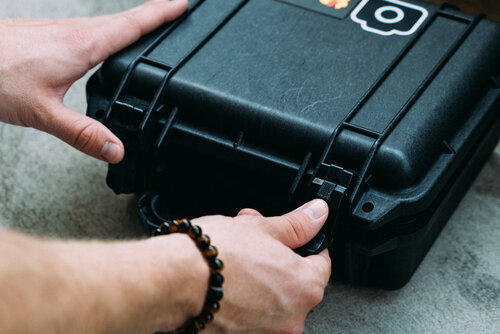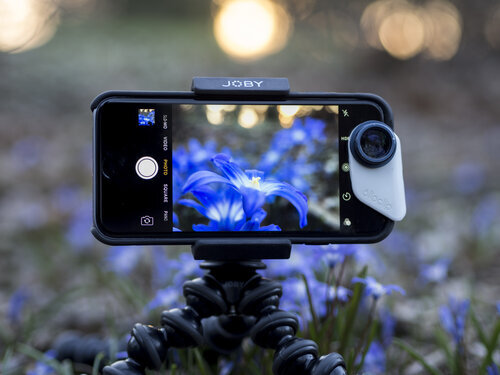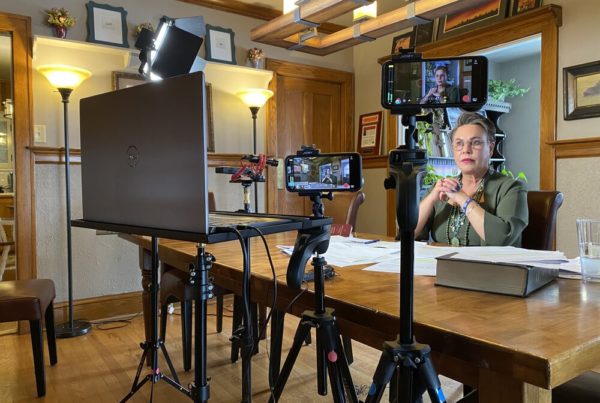There is a lot a company like ours can do to produce great content, even when assembling a crew to shoot something new is not possible. Stock footage, motion graphics, and repurposing old footage can be a great way to get new content out there. But, sometimes there is no escaping the need to get new footage, especially interview footage.
Luckily, technological improvements, and some good old fashioned creativity has given us some great options to film high quality interviews completely remotely.
There are two big variables that need to be considered with a project like this. First is the overall quality of the video and audio files. After all, you want it to look and sound good.
The other variable is how much work you are putting onto the interviewee. Unfortunately, these two variables are pretty much inversely related. The easier it is for the interview subject, the lower the quality of the files.
But there are solutions, you just have to determine which method is right for your project. Let’s take a look at four possibilities for solving this issue.
MODIFIED TRADITIONAL PRODUCTION
I know the goal here was to figure out a way to do this completely remotely, but I think this is still worth discussing. If the quality of the video and audio are the most important thing for your project, you can’t beat actually having a professional crew handle it. However, there is some great new technology that will allow you to drastically reduce the number of people required on set. In fact, it is quite possible to both direct the session and conduct the interviews completely remotely. Clearly, this is the best way to get the highest quality files, but there’s no getting around the fact that there are also safety and liability concerns with this solution.

SEND A PRODUCTION KIT
The main problem with just recording a traditional video call is the recording is capturing the signal of the call itself. This means it’s a fairly low resolution video signal, and any glitches that we’re all too familiar with that happen during the call are recorded as well. That’s not ideal. So what if you were able to send a full production kit to your interviewee so that they could record their end of the interview on their own computer, resulting in a much higher quality recording.
The kit itself could be comprised of any combination of the following:
-
Web cam
-
Light
-
Microphone
-
Appropriate stands, cables, and accessories
All are relatively inexpensive and easy enough to acquire. See what Wistia has done here with what they call a Soapbox Station. This solution would give you a high quality recording, but it is obviously asking a lot of your interview subject to set up the gear, record the signals, and then deliver the files to you afterwards.

IPHONE RECORDING KIT
This is very similar to the Option #2 except instead of recording on the interviewee’s computer, the kit would include an iPhone that would serve as the camera and hard drive. The camera in an iPhone is usually significantly better than the one in a typical laptop. And there are plenty of good options for lights and microphones that work seamlessly with an iPhone. You’d still be requiring your interview subject to set up all of the gear and ship it back to you, but at least you’re not requiring them to use their own gear.

SIMPLY RECORD A VIDEO CHAT
And of course, you can always just record the video call. Most of the typical services like Zoom, Skype, etc. will allow this pretty easily. It’s certainly the easiest solution for the interviewee. They just have to open up their laptop and start answering questions. You can always send the person a modified kit including a microphone or a light to improve things a bit, and there are some third party softwares that can help things, but there’s no getting around that this will result in a lesser quality video signal.
For some brands and organizations this is a perfect solution. It keeps the overall feeling less formal and more conversational. And if you’re worried about the video being a bit blurry at larger sizes, due to the less than ideal camera situation, you could always consider adding a border to the image itself within the frame of the video. This would give you an extra opportunity for branding, as well as letting you present the video in a more optimal size. Here’s an example of what that kind of framing could look like:
Of course these aren’t the only ways to record great interviews remotely. You could easily combine ideas, strip away elements, or come up with an entirely new idea. But I hope the above options show you that getting great interview footage, even during something as dramatic as a pandemic is not only possible, but more accessible than ever.
Let us know if you have any testimonial or explainer video ideas that something like this might work for.




